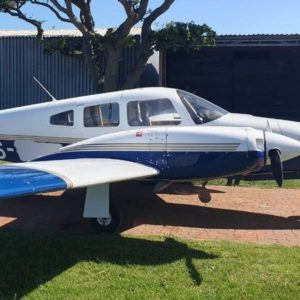No products in the cart.
Multi Engine Piston Rating
Showing all 3 results
Filters Sort results
Reset Apply
Since we opened our doors we have been part of the professional training of many people. Our commitment is to provide you with a quality education, excellent training & the resources needed to shine in today's world. We have affordable prices & excellent instructors. We are sure that studying at Helitactica S.A. will leave you with great satisfaction. Last Updated: 10-01-2023 | ||
Professional Pilots seeking to advance in their career will do a Multi-Engine Rating which will allow you to operate aircraft with more than one engine. This rating will give you a competitive advantage when applying for a job at Airline & Charter companies. Many charter companies fly light twins like Cessna 414s or King Airs, with clients on board. Last Updated: 26-07-2022 |
Multi Engine Piston Ratings on AvPay
AvPay has a range of Multi Engine Piston Rating Courses in the US, Europe, Australia, South Africa and throughout the world. Find Flying Schools on AvPay to compare prices through the Aviation Directories here: https://avpay.aero/directory/
AvPay is a global aviation marketplace that lets you browse a wide selection of Multi Engine Piston Ratings. View all of our Flying Training Courses and discover other related Aviation Products & Services here: https://avpay.aero/marketplace/
Can’t find the Multi Engine Piston Rating you’re looking for? Check-out the Aviation Directories to find an Aviation Company that offers the service you’re looking for: https://avpay.aero/directory/
AvPay: Connecting Pilots with Flying Schools Worldwide!
A Single Engine Piston (SEP) aircraft and a Multi Engine Piston (MEP) aircraft are two different types of airplanes with varying engine configurations. Single Engine Piston (SEP) aircraft are equipped with a single piston engine, which powers the propeller. This means the aircraft has only one engine generating thrust. Most small general aviation aircraft, such as Cessna 172 or Piper Archer, fall into this category. SEP aircraft are commonly used for flight training, personal flying, and recreational purposes. Multi Engine Piston (MEP) Aircraft have two or more piston engines, each driving a separate propeller. These aircraft have the advantage of increased power, performance, and redundancy compared to SEP aircraft. MEP aircraft are typically used for commercial operations, air taxi services, and transportation of passengers or cargo. Examples of MEP aircraft include the Beechcraft Baron or Piper Seneca. Now, let’s discuss the dangers of asymmetric engine failure in a Multi Engine Piston airplane. Asymmetric engine failure refers to the loss of power in one engine of a multi-engine aircraft while the other engine(s) continue to operate normally. This situation poses unique challenges and risks due to the imbalance in thrust and aerodynamic forces. When one engine fails, the aircraft experiences a significant loss of thrust. This results in reduced climb performance, decreased airspeed, and compromised overall aircraft performance. The aircraft may struggle to maintain altitude or climb, especially in critical phases of flight such as take-off or during a go-around. Asymmetric thrust causes an imbalance in the aircraft’s yawing moment, resulting in a tendency to yaw towards the failed engine. This can lead to adverse handling characteristics, such as a yawing motion or uncontrollable rolling moments. Pilots must promptly and correctly apply corrective control inputs to maintain control of the aircraft. Maintaining directional control becomes more challenging with one engine inoperative. Pilots need to actively use rudder inputs and other control surfaces to counteract the yawing moment caused by the asymmetric thrust. Failure to manage the yaw can result in a loss of control and potential departure from controlled flight. Asymmetric engine failure affects the aircraft’s performance limits, such as maximum altitude capability, rate of climb, and maximum weight that can be safely carried. Pilots must be aware of these limitations and make appropriate adjustments to their flight plans and procedures. Handling asymmetric engine failure requires quick and effective decision-making. Pilots must identify the failed engine, complete the appropriate emergency procedures, and make decisions regarding landing, diversion, or continuing the flight. Time-critical actions, proper checklist usage, and effective crew coordination are vital in managing the emergency situation. To mitigate the risks associated with asymmetric engine failure, pilots of MEP aircraft undergo specialized training, including engine-out procedures, simulator practice, and emergency simulations. They learn techniques to manage the aircraft’s control, maintain performance, and safely land the airplane in the event of an engine failure. These training programs aim to enhance pilot proficiency and ensure that pilots are prepared to handle such situations safely. It’s important to note that proper training, adherence to standard operating procedures, and regular practice of emergency procedures are essential for pilots operating Multi Engine Piston aircraft to minimize the dangers associated with asymmetric engine failure and maintain a high level of flight safety.






